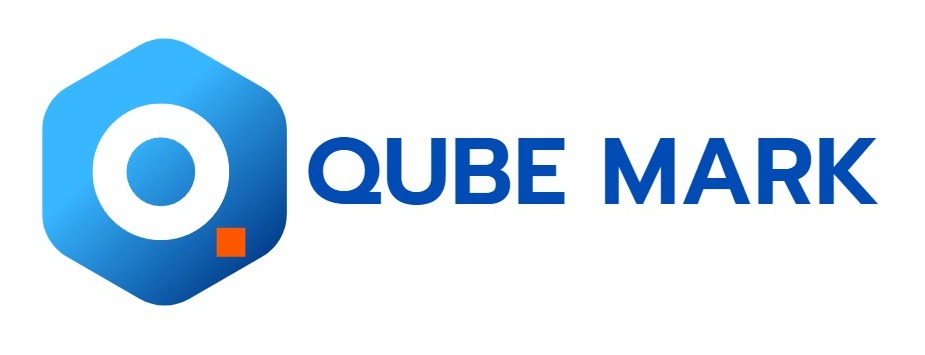BANGALORE, India, May 22, 2025 -- Carbon Capture Utilization System (CCU) Market is Segmented by Type (Pre-Combustion Carbon Capture, Oxy-Combustion Carbon Capture, Post-Combustion Carbon Capture), by Application (Oil & Gas, Power Generation).
The Carbon Capture Utilization System (CCU) Market was valued at USD 5090 Million in the year 2024 and is projected to reach a revised size of USD 11900 Million by 2031, growing at a CAGR of 13.1% during the forecast period.
Claim Your Free Report: https://reports.valuates.com/request/sample/QYRE-Auto-33C16554/Global_Carbon_Capture_Utilization_System_CCU_Market
Major Factors Driving the Growth of Carbon Capture Utilization System (CCU) Market:
The Carbon Capture Utilization (CCU) market is experiencing robust growth due to the intersection of regulatory pressure, corporate sustainability goals, and technological advances in carbon reuse. Industries across power, oil and gas, chemicals, and construction are actively integrating CCU into their operations to reduce emissions and capitalize on new revenue streams. Diverse applications from synthetic fuels to carbon-negative materials are broadening the scope of CO₂ utilization. Strategic investments, government support, and cross-sector partnerships are accelerating commercialization. With climate goals becoming more urgent, CCU is evolving from a niche solution to a central pillar in global decarbonization efforts, offering both environmental and economic value.
Unlock Insights: View Full Report Now! https://reports.valuates.com/market-reports/QYRE-Auto-33C16554/global-carbon-capture-utilization-system-ccu
TRENDS INFLUENCING THE GROWTH OF THE CARBON CAPTURE UTILIZATION SYSTEM MARKET:
Oxy-combustion carbon capture is becoming a key driver in the growth of the Carbon Capture Utilization (CCU) market due to its capability to produce a nearly pure stream of CO₂, simplifying the capture and compression processes. By burning fossil fuels in pure oxygen instead of air, the resulting flue gas is highly concentrated in carbon dioxide and water vapor, enabling easier separation and reducing energy costs for capture. This method is especially attractive for retrofitting existing coal-fired power plants, where it provides an efficient pathway to reduce emissions. Additionally, oxy-combustion is increasingly being linked to industrial gas recovery, synthetic fuel production, and enhanced oil recovery (EOR), creating multiple revenue-generating opportunities and increasing its integration across diverse industrial sectors.
Pre-combustion carbon capture is significantly contributing to the expansion of the CCU market, especially in power plants and hydrogen production facilities. This process involves gasifying fossil fuels to produce a mixture of hydrogen and carbon monoxide, which is then shifted to generate hydrogen and carbon dioxide. The CO₂ is separated before combustion, enabling higher capture efficiency and easier integration with downstream utilization applications. This technology is widely used in integrated gasification combined cycle (IGCC) plants and is essential for producing blue hydrogen. With governments promoting low-carbon fuel transitions, pre-combustion technologies are gaining attention for their scalability and lower capture cost per ton. Industries adopting hydrogen fuel and synthetic gas are driving demand for this efficient carbon mitigation pathway.
The oil and gas industry is a dominant force propelling the growth of the CCU market due to its role in both carbon dioxide emissions and utilization. Captured CO₂ is being injected into oil fields to increase pressure and extract additional crude oil through Enhanced Oil Recovery (EOR), which simultaneously stores carbon underground. This dual economic and environmental benefit encourages major oil companies to invest in large-scale carbon capture facilities. Moreover, increasing regulatory pressure to reduce emissions and achieve net-zero targets has led to CCU being embedded in the decarbonization strategies of fossil fuel enterprises. Continued exploration of carbon-based fuels and synthetic hydrocarbons also supports long-term investment in capture and utilization infrastructure, sustaining market momentum.
Governments around the world are enforcing stringent carbon emission regulations to combat climate change, which directly supports the demand for CCU systems. Cap-and-trade programs, carbon taxes, and net-zero commitments are driving industries to seek solutions that capture and repurpose carbon dioxide. The introduction of mandatory emission thresholds for large polluters compels sectors like power, steel, cement, and chemicals to incorporate CCU into their environmental compliance plans. Additionally, participation in voluntary carbon markets by private corporations is expanding the scope of CCU beyond regulatory compliance, making it a preferred strategy for ESG (Environmental, Social, and Governance) objectives. This legal and reputational framework is a critical growth driver for carbon capture and utilization technologies globally.
The development of industrial clusters and carbon capture hubs is creating economies of scale for the CCU market. These hubs facilitate shared infrastructure for CO₂ transportation, storage, and utilization, which significantly reduces the cost per ton of CO₂ processed. Countries like the U.S., UK, and Norway are investing in such clusters, bringing together multiple industries such as refineries, chemical plants, and cement factories within a connected CO₂ network. These regional initiatives promote collaboration, reduce logistical barriers, and make CCU implementation more feasible for smaller industrial players. The growth of these hubs fosters investment, accelerates deployment timelines, and enhances the commercial viability of carbon capture and utilization technologies across multiple end-use sectors.
The CCU market is also driven by the rising demand for low-carbon construction and sustainable building materials. Captured CO₂ is being used to produce carbon-negative concrete, aggregates, and other construction inputs through mineralization processes. This application not only offsets emissions but also creates a circular economy for carbon-intensive industries. As urbanization increases and green construction standards become stricter, developers and governments are increasingly favoring materials with embedded carbon capture. The construction industry's push toward net-zero buildings and carbon offsetting mechanisms is providing a strong commercial incentive for CCU companies to collaborate with material manufacturers. This evolving application of captured carbon supports diversification and long-term market resilience.
The development and commercialization of synthetic fuels using captured CO₂ is another factor driving CCU market growth. Technologies are being developed to convert CO₂ into methane, methanol, and even aviation fuels by reacting it with green hydrogen or other chemical agents. These fuels provide a renewable energy source for hard-to-decarbonize sectors like aviation, shipping, and long-haul transport. Countries investing in hydrogen economies are naturally adopting CCU technologies as part of their fuel development roadmap. Moreover, synthetic fuels derived from CO₂ are being considered as viable alternatives to fossil-based transportation fuels in climate policies. As these fuels move closer to commercial viability, the demand for carbon feedstock accelerates CCU technology adoption.
The private sector is increasingly becoming a catalyst for CCU market expansion due to the widespread adoption of net-zero goals and ESG-led investing. Multinational corporations in energy, cement, and steel sectors are under pressure from shareholders and consumers to demonstrate decarbonization. Investing in CCU allows them to visibly reduce their operational footprint and participate in the circular carbon economy. Furthermore, ESG-driven financial instruments and sustainability-linked loans reward companies that implement carbon capture and reuse. This financing mechanism enables scalable CCU deployments while encouraging innovation. The alignment of corporate strategy with climate-conscious investment trends makes CCU an integral part of forward-looking sustainability portfolios.
Claim Yours Now! https://reports.valuates.com/api/directpaytoken?rcode=QYRE-Auto-33C16554&lic=single-user
CARBON CAPTURE UTILIZATION SYSTEM MARKET SHARE:
Global key players of the Carbon Capture Utilization System (CCU) include Exxon Mobil, SLB, Linde PLC, Halliburton, Huaneng, etc. The top five players hold a share of about 41%. North America is the world's largest market for Carbon Capture Utilization System (CCU) and holds a share of about 50%, followed by Europe and Asia-Pacific, which share about 26% and 18%, separately. In terms of product type, Post-Combustion Carbon Capture is the largest segment, accounting for a share of about 86%. In terms of application, Oil & Gas is the largest field with a share of about 42 percent.
Key Companies:
- Siemens AG
- General Electric
- Mitsubishi Heavy Industries Ltd.
- Linde
- EXXON MOBIL
- Halliburton
- Fluor Corporation
- SLB
- Huaneng
- BASF AG
- Honeywell UOP
- Sulzer
- Equinor
- Shell
- JX Nippon (ENEOS)
- CarbonFree
- Sinopec Limited
Purchase Chapters: https://reports.valuates.com/request/chaptercost/QYRE-Auto-33C16554/Global_Carbon_Capture_Utilization_System_CCU_Market
SUBSCRIPTION
We have introduced a tailor-made subscription for our customers. Please leave a note in the Comment Section to know about our subscription plans.
DISCOVER MORE INSIGHTS: EXPLORE SIMILAR REPORTS!
- The global market for Carbon Capture was estimated to be worth USD 4.41 billion in 2023 and is forecast to a readjusted size of USD 6.89 Billion by 2030 with a CAGR of 6.6% during the forecast period 2024-2030.
- The global market for Point Source Carbon Capture Solution was valued at USD 4643 Million in the year 2024 and is projected to reach a revised size of USD 7555 Million by 2031, growing at a CAGR of 7.5% during the forecast period.
- The global market for Small Scale Carbon Capture System was valued at USD 1447 Million in the year 2024 and is projected to reach a revised size of USD 2160 Million by 2031, growing at a CAGR of 6.7% during the forecast period.
- The global market for Carbon Capture Compressor was valued at USD 915 Million in the year 2024 and is projected to reach a revised size of USD 1296 Million by 2031, growing at a CAGR of 5.8% during the forecast period.
- Carbon Capture Usage and Storage (CCUS) System Market
- CO2 Capture Usage and Storage (CCUS) System Market
- The global market for Thermal Energy Harvesting System was estimated to be worth USD 1490 Million in 2023 and is forecast to a readjusted size of USD 2189.5 Million by 2030 with a CAGR of 5.7% during the forecast period 2024-2030.
- The global market for Volatile Organic Compounds (VOC) Recovery System was estimated to be worth USD 26150 Million in 2023 and is forecast to a readjusted size of USD 34150 Million by 2030 with a CAGR of 3.9% during the forecast period 2024-2030
- The global Hydrogen-Based CCUS Technologies market was valued at USD 1218 Million in 2023 and is anticipated to reach USD 6466.9 Million by 2030, witnessing a CAGR of 27.1% during the forecast period 2024-2030.
- Carbon Capture and Utilisation Solutions Market
- CO2 Energy Storage (CES) Technology Market
DISCOVER OUR VISION: VISIT ABOUT US!
Valuates offers in-depth market insights into various industries. Our extensive report repository is constantly updated to meet your changing industry analysis needs.
Our team of market analysts can help you select the best report covering your industry. We understand your niche region-specific requirements and that's why we offer customization of reports. With our customization in place, you can request for any particular information from a report that meets your market analysis needs.
To achieve a consistent view of the market, data is gathered from various primary and secondary sources, at each step, data triangulation methodologies are applied to reduce deviance and find a consistent view of the market. Each sample we share contains a detailed research methodology employed to generate the report. Please also reach our sales team to get the complete list of our data sources.
GET A FREE QUOTE
Valuates Reports
sales@valuates.com
For U.S. Toll-Free Call 1-(315)-215-3225
WhatsApp: +91-9945648335
Website: https://reports.valuates.com
Blog: https://valuatestrends.blogspot.com/
Pinterest: https://in.pinterest.com/valuatesreports/
Twitter: https://twitter.com/valuatesreports
Facebook: https://www.facebook.com/valuatesreports/
YouTube: https://www.youtube.com/@valuatesreports6753
https://www.facebook.com/valuateskorean
https://www.facebook.com/valuatesspanish
https://www.facebook.com/valuatesjapanese
https://valuatesreportspanish.blogspot.com/
https://valuateskorean.blogspot.com/
https://valuatesgerman.blogspot.com/
https://valuatesreportjapanese.blogspot.com/
This News is brought to you by Qube Mark, your trusted source for the latest updates and insights in marketing technology. Stay tuned for more groundbreaking innovations in the world of technology.









